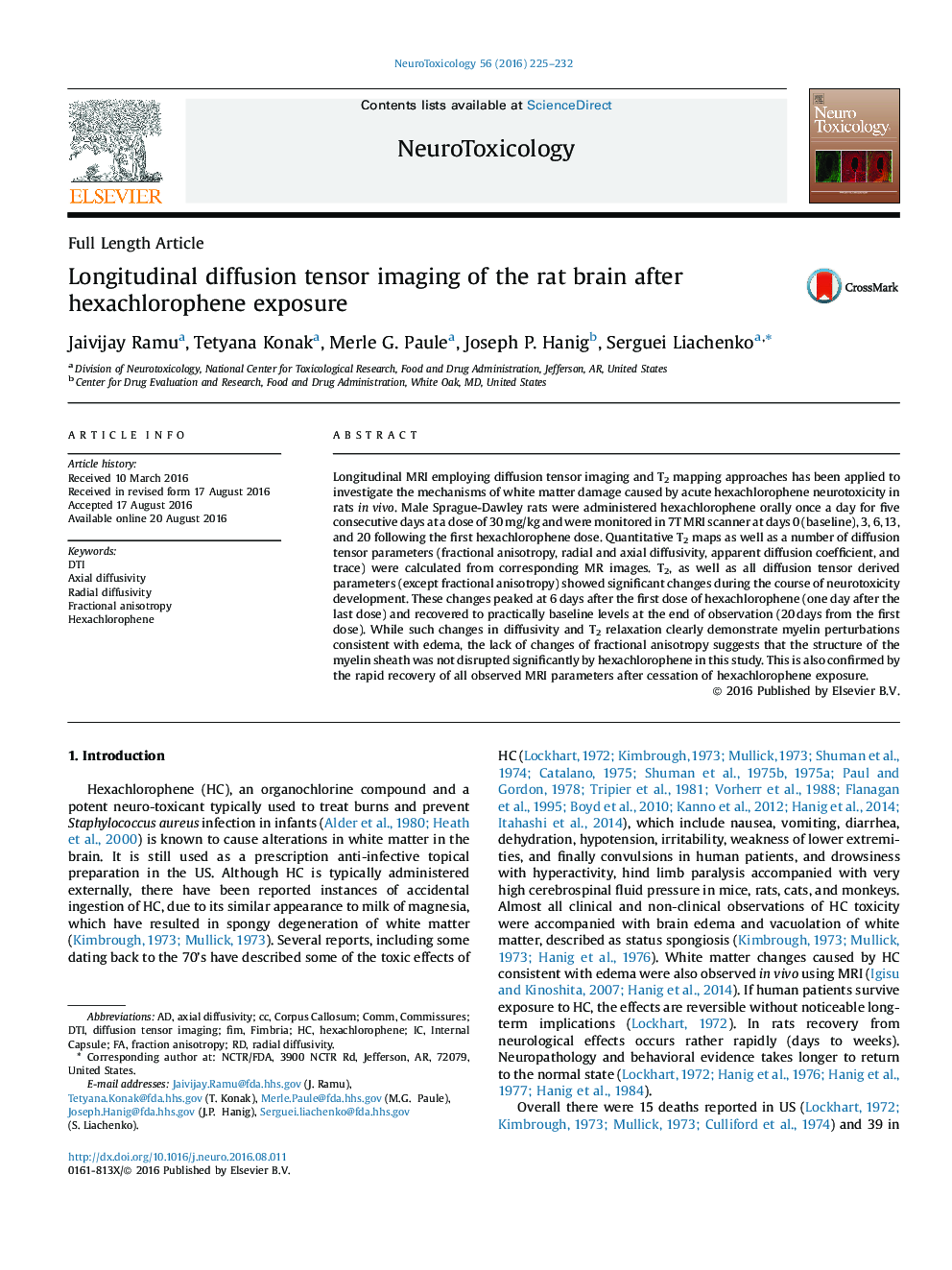| Article ID | Journal | Published Year | Pages | File Type |
|---|---|---|---|---|
| 2589430 | NeuroToxicology | 2016 | 8 Pages |
•Diffusion tensor imaging was used to study neurotoxicity of hexachlorophene in rats.•Transient changes of white matter consistent with myelinic edema were detected.•MRI provides sensitive non-invasive tool to investigate non-clinical neurotoxicity.
Longitudinal MRI employing diffusion tensor imaging and T2 mapping approaches has been applied to investigate the mechanisms of white matter damage caused by acute hexachlorophene neurotoxicity in rats in vivo. Male Sprague-Dawley rats were administered hexachlorophene orally once a day for five consecutive days at a dose of 30 mg/kg and were monitored in 7T MRI scanner at days 0 (baseline), 3, 6, 13, and 20 following the first hexachlorophene dose. Quantitative T2 maps as well as a number of diffusion tensor parameters (fractional anisotropy, radial and axial diffusivity, apparent diffusion coefficient, and trace) were calculated from corresponding MR images. T2, as well as all diffusion tensor derived parameters (except fractional anisotropy) showed significant changes during the course of neurotoxicity development. These changes peaked at 6 days after the first dose of hexachlorophene (one day after the last dose) and recovered to practically baseline levels at the end of observation (20 days from the first dose). While such changes in diffusivity and T2 relaxation clearly demonstrate myelin perturbations consistent with edema, the lack of changes of fractional anisotropy suggests that the structure of the myelin sheath was not disrupted significantly by hexachlorophene in this study. This is also confirmed by the rapid recovery of all observed MRI parameters after cessation of hexachlorophene exposure.
